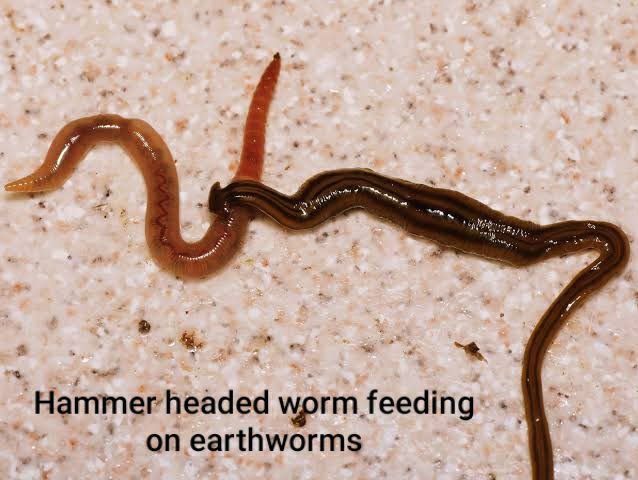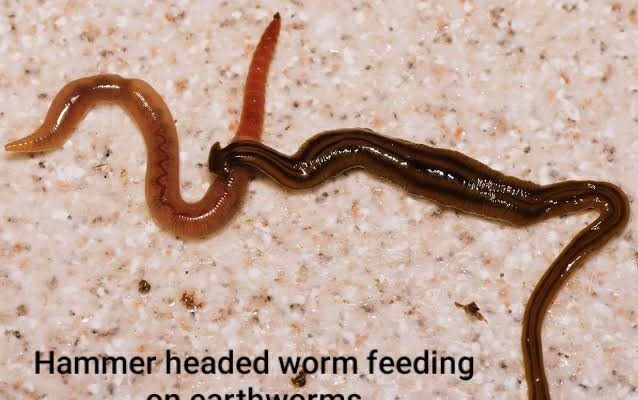
These unique little creatures, often mistaken for typical worms, are known for their distinct hammer-shaped heads. But what’s more surprising is how they impact earthworm populations. You might be thinking, “Do they really pose a threat?” Well, they do, and that’s what we’re here to explore. Let’s dig into the intriguing relationship between hammerhead worms and their earthworm cousins.
What Are Hammerhead Worms?
Hammerhead worms belong to the **Bipalium** genus and are native to Southeast Asia. Their name comes from their unique head shape, which resembles a hammer. These worms can grow quite large, some reaching lengths of over a foot! They typically have a smooth, shiny body that can be brown, gray, or even greenish, allowing them to blend into their surroundings.
So, what sets them apart from regular earthworms? While earthworms are essential for soil health, hammerhead worms are predatory. They feed on other soft-bodied invertebrates, and yes, that includes earthworms. This predatory behavior is what makes them a concern for earthworm populations and, consequently, for the soil ecosystem.
You might be wondering how these hammerhead worms came to invade new territories, particularly outside their native range. Well, they’ve made their way across the globe through the plant trade and soil used in gardening. This gives them access to gardens and farms, where they can wreak havoc on local earthworm populations.
How Do Hammerhead Worms Affect Earthworms?
The impact of hammerhead worms on earthworm populations is significant and concerning. First and foremost, they are predators. When hammerhead worms find earthworms in the soil, they consume them, leading to a decline in earthworm numbers. This isn’t just a minor issue; earthworms are crucial for aerating the soil and breaking down organic matter. When their populations dwindle, the health of the soil suffers.
Imagine a garden that thrives on rich, loamy soil, teeming with earthworms. What happens if those earthworms start disappearing? You’d notice poorer plant growth and less nutrient availability. The presence of hammerhead worms can tip this balance, leading to less fertile land.
Additionally, because hammerhead worms can reproduce quickly, their populations can explode when they find an ideal environment. This rapid increase means they can outcompete earthworms for food and space, creating a cycle that further diminishes earthworm numbers. It’s a classic case of a predator pushing a prey species toward decline.
The Ecological Impacts of Declining Earthworm Populations
When hammerhead worms disrupt earthworm populations, the ripple effects can be felt throughout the ecosystem. Earthworms serve many essential roles, including improving soil structure, enhancing water retention, and recycling nutrients. When these worms decline, several ecological issues can arise.
For instance, without enough earthworms, soil compaction can increase. Compacted soil makes it harder for plant roots to grow and access water and nutrients. This can lead to weaker plants and lower crop yields, a serious concern for farmers and gardeners alike.
Moreover, earthworms contribute to the carbon cycle. They help break down organic matter, which in turn releases nutrients back into the soil. If earthworm populations drop, there could be less organic matter breakdown, potentially leading to an increase in carbon in the atmosphere. Isn’t that a concerning thought?
In summary, the decline of earthworms due to hammerhead worms can lead to less fertile soil, poorer plant health, and even broader environmental impacts. It’s like pulling one thread from a tapestry; the whole structure can unravel.
Identifying Hammerhead Worms in Your Garden
So, how can you spot these troublesome invaders in your own backyard? Hammerhead worms are relatively easy to identify if you know what to look for. Their flattened, broad head is the main giveaway, and their bodies are typically shiny and smooth.
Here’s a quick checklist to help you identify a hammerhead worm:
- Shape: Look for a flattened, broad head that resembles a hammer.
- Size: These worms can vary in size but can grow over a foot long.
- Color: They often have brown or gray bodies, sometimes with lighter stripes.
- Movement: Hammerhead worms move in a distinct, undulating manner, unlike earthworms.
If you suspect that you have hammerhead worms in your garden, it’s important to act quickly. Keeping an eye out for them can help prevent a larger infestation and protect your earthworm populations.
Managing Hammerhead Worm Populations
Dealing with hammerhead worms can seem daunting, but there are steps you can take to manage their presence. Here are some effective strategies:
- Hand Removal: If you find hammerhead worms, you can remove them by hand (wear gloves!) and dispose of them in a sealed bag.
- Soil Moisture: Hammerhead worms prefer moist environments. Reducing excess moisture in your garden can make it less appealing to them.
- Encourage Earthworms: You can create a welcoming environment for earthworms by adding organic matter like compost, which can help them thrive.
- Avoid Chemical Pesticides: Using harsh chemicals can harm earthworms and disrupt the soil ecosystem. Opt for organic methods whenever possible.
These methods not only help in controlling hammerhead worms but also ensure that earthworms can flourish in your garden.
The Bigger Picture: Invasive Species and Ecosystems
The presence of hammerhead worms is a reminder of how invasive species can disrupt local ecosystems. They serve as a case study in the complexities of nature. When non-native species are introduced, whether intentionally or accidentally, they can upset the balance that living organisms have maintained for centuries.
This scenario raises important questions about biodiversity and ecosystem health. Invasive species can lead to a loss of native species, which in turn affects the entire food chain. Understanding the impact of these invasives is crucial for conservation efforts and for maintaining healthy environments.
It’s important to remember that ecosystems are interconnected. The health of earthworms directly affects plants, soil health, and even the broader wildlife that depends on those plants. Protecting native earthworm populations is about more than just keeping a single species alive; it’s about preserving the intricate web of life.
Hammerhead worms may seem like just another odd creature in the soil, but their impact on earthworm populations is anything but trivial. By understanding how these invaders disrupt local ecosystems, we can take steps to protect our valuable earthworms and promote healthy soil.
As stewards of the land, we have a responsibility to keep our gardens and natural spaces thriving. By managing hammerhead worm populations and fostering earthworm growth, we can help ensure that our soil remains rich and full of life. So next time you dig in the garden, take a moment to appreciate the tiny world beneath your feet—after all, it’s the earthworms that help keep us all nourished!

